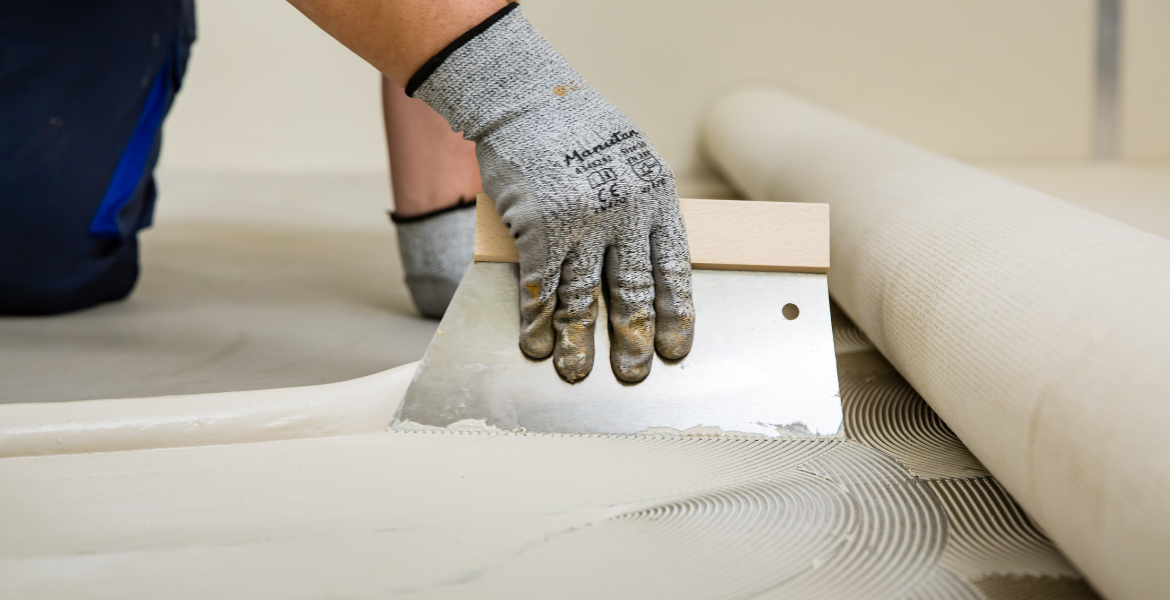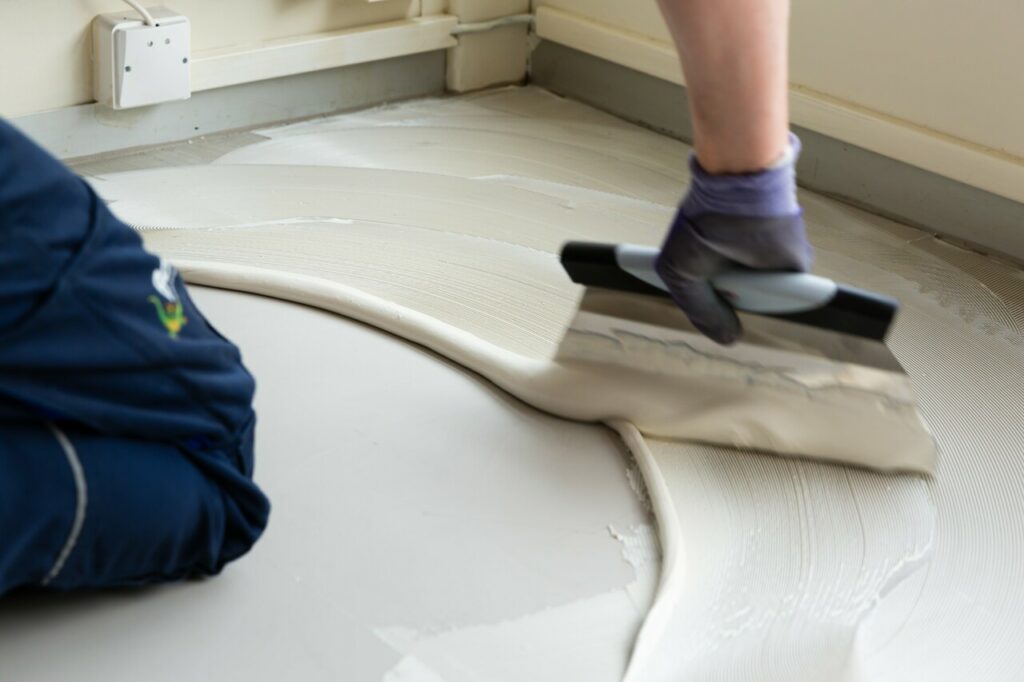
Choosing the right adhesive is essential to the success of any flooring project. Some jobs will require a more specialist adhesive, and in this article, Adam Jones, Technical Consultant at Bostik, talks through the different types and when to use them.
Without doubt, these are the most used specialist adhesives, and ones that I imagine most professional floorlayers would not consider to be a specialist at all. So, why am I bringing them up?
PS adhesives are both commonly used but also commonly misused. When adhering flooring to traditional bases, like smoothing compounds or timber substrates, PS adhesives are used much in the same fashion as most other acrylic adhesives – requiring only a short waiting time before placing the flooring and allowing a full transfer of adhesive.
Allowing a PS adhesive to go fully clear is only needed on non-absorbent bases such as terrazzo or metal and, in these cases, a smaller notch trowel is typically used. Because non-absorbent surfaces don’t allow the adhesive’s moisture to soak in, laying flooring too early can trap moisture, leading to potential failure, or even rust on metal substrates.
HT adhesives are used where flooring is exposed to significant temperature fluctuations, especially near large windows or areas affected by solar gain.
These adhesives allow for a short open time and create a very strong bond that resists expansion and contraction caused by heat changes. They are essential in areas where temperature-induced movement could otherwise weaken or damage the flooring.
A very bespoke adhesive, used in conjunction with ESD flooring and copper tape. The human body carries an electrical charge and just by moving around, friction can cause an imbalance of this – making you electro-statically charged. When you touch a grounded item, this charge escapes (dissipates) – and this is what an electric shock is. This mostly causes no real issue, but if it happens in a situation when sensitive equipment is being made, or sensitive measuring equipment is used, then these electric shocks can cause significant damage.
People who work in these areas wear special conductive shoes, so any charge generated travels down through their shoes and through the floor covering – which is when the adhesive becomes critical. An electro-static dissipative adhesive contains conductive fibres and, when applied, these interlink to provide a passage for the charge to follow until it reaches the copper strip (this is stuck to the base substrate under the floor covering). Then, the copper strip carries the charge to an earthing point.
There are applications where a much higher strength of bond or more comprehensive qualities are required. These adhesives will provide a much higher sheer resistance and would commonly be used in areas that experience a large volume of traffic – typically warehouses or facilities which use wheeled trollies or pallet trucks.
The use of these types of trollies and pallet trucks exerts high dynamic loads onto a floor, the trollies are heavy, and the load is spread only through the wheels onto the floor covering. Over time, and especially if they change direction frequently, these loads can destroy the flooring, the adhesive and the smoothing compound. To overcome these issues, environments like these will opt for a high-strength smoothing compound in conjunction with high-strength adhesives. These are able to withstand exerted loads and maintain an integral installation.
In general, these adhesives are also likely to have much better heat, moisture and vibration resistance, meaning they are often recommended for areas where large volumes of water are present, fluctuations in temperature are significant, or where the environment may suffer vibration.
Impact tapes or double-sided tapes have become increasingly popular over the years. They were brought in to provide an alternative to contact adhesives, and thankfully they have continued to increase in popularity.
A lot of main contractors do not allow contact adhesives onto their sites anymore, and an equally large number of flooring contractors will simply not use traditional contact adhesives, marking a big step forward for occupational health in the workplace.
In additional to offering occupational health benefits for the installer, impact tapes come supplied on an easily storable roll – once you have used what you need, you simply put it back in the van until it’s needed again, until every bit has been used. There is no wasted adhesive – 100% of the tape is used.

With so many adhesive types available to choose from, it is essential to consider the environment in which the flooring is being installed. Only then will you be able to ensure a professional finish that lasts for the long term.
To learn more about what adhesives work best in different environments, get in touch to book bespoke training at the Bostik Academy by contacting the training manager, Paul Sycamore, at paul.sycamore@bostik.com or visiting www.bostik-profloor.co.uk.